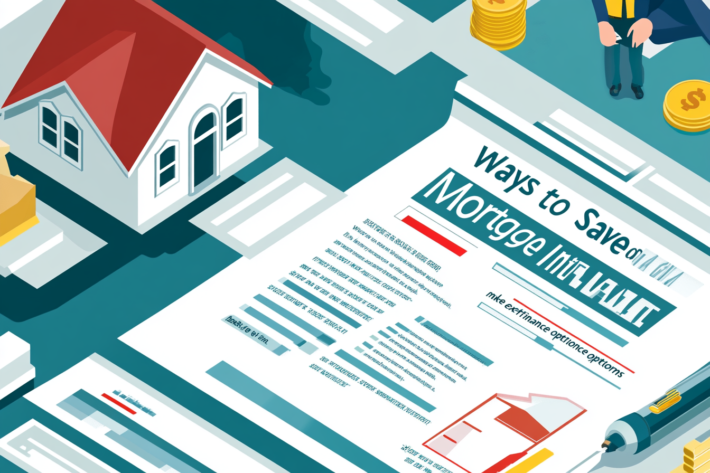How To Change Mortgage Companies: Guide for Smooth Transition

Switching mortgage companies can seem daunting, but it’s a straightforward process. Many people decide to switch to lower interest rates or better terms. With the right guidance, you can switch lenders and save money quickly. This article will walk you through the process, show you what to expect, and help you make an informed choice. Let’s look at how to change mortgage companies in a few easy steps.

Why Consider Switching Mortgage Lenders?
There are many reasons why homeowners decide to switch mortgage lenders. The most common reason is to take advantage of lower interest rates. Doing so can reduce monthly payments and save money over the loan’s life. Others switch to adjust loan terms, like changing from a 30-year to a 15-year mortgage. Switching can also allow access to better customer service or specific loan benefits other companies offer. Whatever your reason, weighing the benefits against potential costs is essential.
1. Check if You’re Eligible to Switch
Before moving forward, make sure you’re eligible to switch mortgage companies. Check if your loan has any prepayment penalties that would make switching costly. Some loans have restrictions that apply within the first few years. If unsure, contact your current lender and ask about any penalties. Also, consider your credit score, as a higher score often helps secure better rates with new lenders.
2. Research New Mortgage Companies
Take time to explore other mortgage companies. Compare interest rates, loan terms, and customer reviews. Many online resources can help you see a wide range of lenders quickly. Websites like Bankrate or Zillow provide side-by-side comparisons. Look for lenders with a good reputation and positive customer service reviews. Don’t rush; this decision will affect your finances for years.

3. Calculate the Costs of Switching
Switching mortgage lenders can lead to savings, but it also comes with costs. Typical expenses include application fees, appraisal fees, and possible penalties from your current lender. Check if the savings on the new mortgage rate outweigh these costs. Use a mortgage calculator to estimate how long it would take to “break even” after switching. This will give you a clear picture of whether it’s financially worth it.
4. Gather Required Documents
Changing mortgage lenders will require documentation. You’ll need proof of income, tax returns, bank statements, and a current mortgage statement. Gathering these documents before starting the application process is a good idea. Having everything ready helps avoid delays. Most lenders provide a checklist of what’s needed, so check with them early.
5. Apply with the New Lender
Once you’ve chosen a lender, start the application process. Fill out the forms honestly and accurately. Your new lender will likely perform a credit check and request additional documentation. If you’re unsure about any part of the process, ask the lender’s representative for help. Applying for a new mortgage may take a few days to weeks, depending on the lender’s requirements.

6. Undergo the Appraisal Process
Many lenders require a home appraisal as part of the mortgage switch process. An appraisal ensures the home’s value is high enough to support the loan amount. The lender will arrange for a professional appraiser to visit your home and assess its value. Appraisals can cost a few hundred dollars, and the result will impact your loan approval.
7. Review the New Loan Agreement
Before signing with the new lender, carefully review the loan terms. See details about the interest rate, monthly payments, and additional fees. Check if there are any prepayment penalties in the new agreement. Don’t hesitate to ask questions if anything seems unclear. This is a big decision, and you want to be confident you understand everything.
8. Close on the New Mortgage
Once you’re happy with the loan terms, it’s time to close the mortgage. This usually involves signing documents and officially transferring the mortgage. The closing process can include fees, so ensure you’re prepared for these expenses. After closing, your new lender will take over, and you’ll start making payments to them. Congratulations, you’ve successfully switched mortgage companies!
9. Notify Your Current Lender
Once you are done closing, inform your first lender that you have refinanced or changed a new lender. In this final step, they should be very careful lest they charge you for a loan you have repaid. Some of these lenders will report to your original lenders, but it is always wise to confirm this. This will help to end your business with the old lender and avoid misunderstandings that may come next.
FAQs
- Can I change mortgage companies if I’m behind on payments?
Yes, but it might be challenging. Some lenders may work with you, but others require you to be current on payments. - Will switching lenders hurt my credit score?
Yes, a little. A credit inquiry from the new lender may temporarily lower your score by a few points, but it should recover soon. - How often can I switch mortgage lenders?
You can switch as often as you like, but frequent switching can lead to costs and fees that add up over time. - Do I need a lawyer to switch mortgage companies?
In most cases, no. But consulting one can be helpful if you’re concerned about the terms of your new loan. - What’s the best time to switch mortgage companies?
Many experts recommend switching when interest rates are low, or you can save significantly on your monthly payments. - Are there penalties for switching mortgage lenders early?
Some loans have early repayment penalties. Check your current loan’s terms before switching to avoid unexpected fees.
Final Thoughts
Transferring from one mortgage firm to another can be beneficial, especially because you can get a better loan deal. There are cost considerations, pros, cons, and processes to follow when considering an entrepreneurial venture. First, look for lenders and collect your papers. Always assess your options to make better judgments to get the right result. Transferring your business to a different lender is simple and fruitful.
Keep Learning
> Escrow Fee in the Mortgage Process: Homebuyers Should Know
> Home Loans: Florida Credit Unions Vs Mortgage Brokers
> Seller Concessions in Florida Mortgage Loans: Key Benefits



